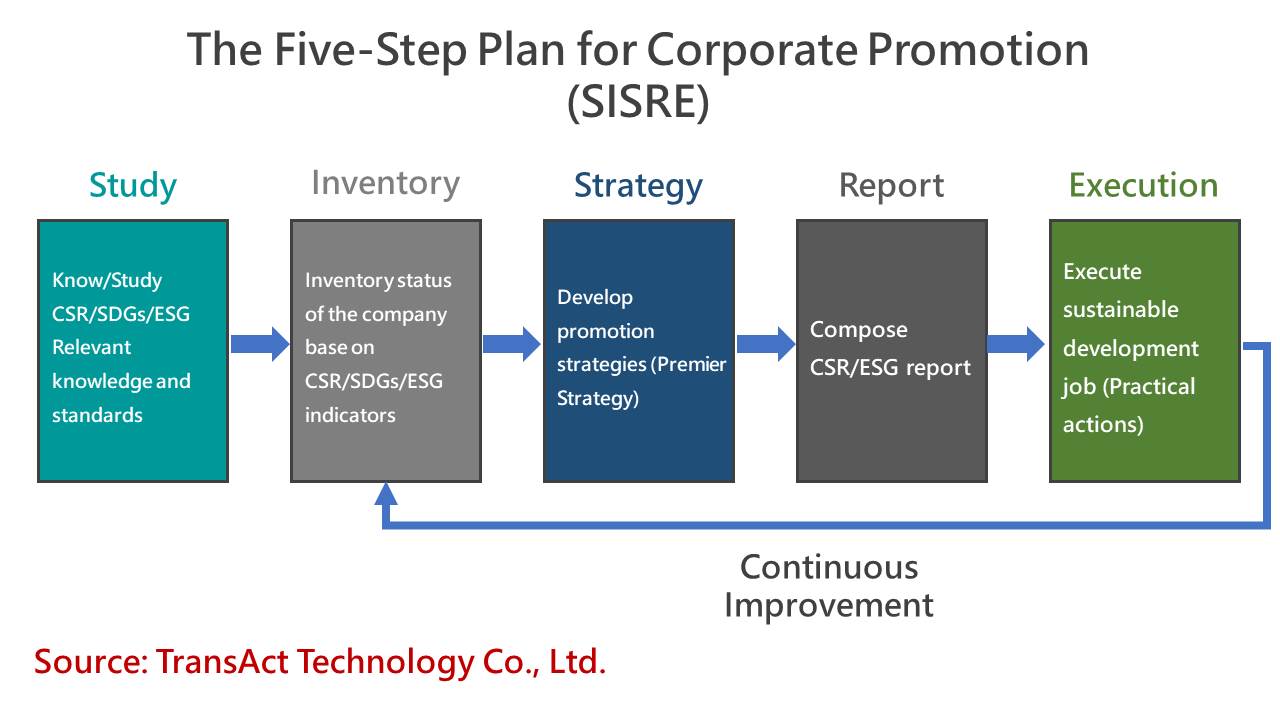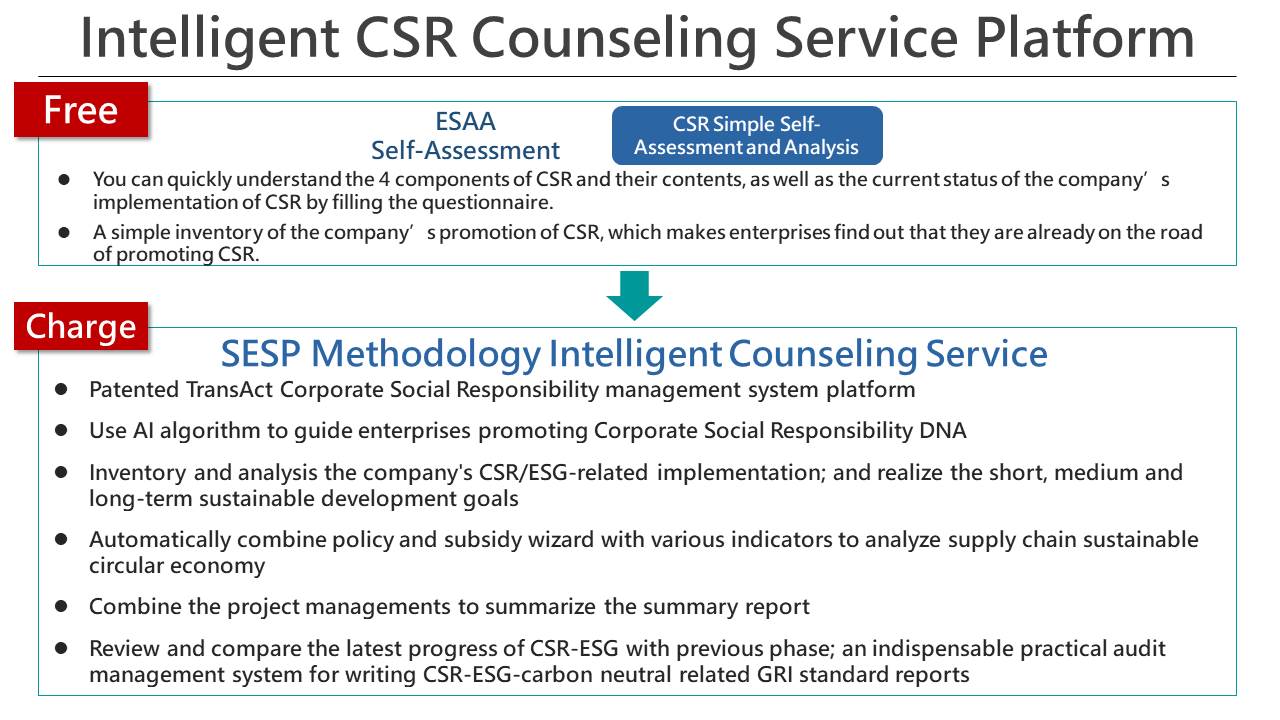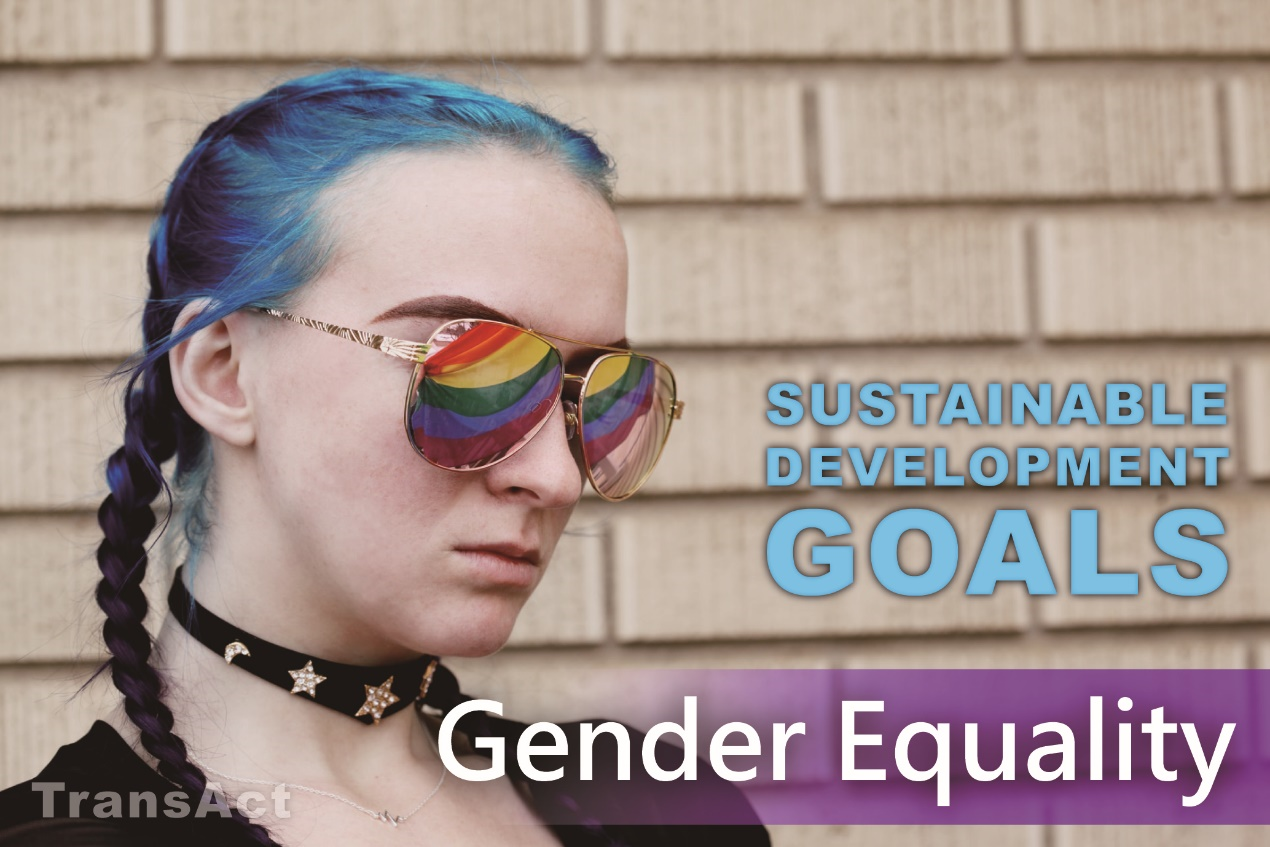Promotion of CSR
What is CSR?
Corporate Social Responsibility (CSR) means that a company should “take from society, give back to society”. Not only make money for shareholders, but also contribute to the sustainable development of society and the environment.
Actually, CSR is not a new concept. There are “confucian entrepreneurs” in Chinese and corporate philanthropists” in the West. Therefore, before the term appeared, the practice of companies giving back to society already existed.
Ancient Chinese Hui Merchants already had the concept of CSR, which appealed to business ethics including treating people with sincerity and trust, gaining profits with righteousness, winning with quality and giving back to the society with kindness.
In 1999, the UN Secretary-General then, Kofi Anan, called for companies to implement CSR. At the time, CSR only presented a broad concept (no validation index).
CSR has been the rage since the financial crisis in 2008.
CSR is applicable to: governments, companies, NGOs and individuals.
Traditionally, it is believed that CSR is just a charitable activity of donating money, so it is a matter of large and wealthy companies and has nothing to do with small and medium enterprises (SMEs). However, there are many components of CSR, and it is not necessary to be done with a lot of money. Some components are not even related to money, such as providing a happy working environment for employees, hiring employees, cultivating employees, advocating turning off the lights, paying attention to consumer safety, etc.
There are many companies that are already implementing them, but they don’t know. Wouldn't it be a pity to be promoted to a CSR company if they can work a little harder?
Promoting CSR not only can give back to society and improve the company’s image, but also can obtain related subsidies easily. In addition, it can drive more integration of the upstreams and downstreams of the industry chains, and thus obtain diversified orders at home and abroad.
Based on the global trends in 2021, international investors will give priority to CSR companies to invest (ESG funding wave), and achieve both public welfare and benefits which forms a circle of good.
Companies can evaluate the extent of promoting CSR according to their own resources because CSR is not a competition of scale of investment. It’s the idea of how to start from the original business of the company plus the concept of altruism to give back to society. Perhaps large companies have broader space for development, but SMEs can also make distinctive CSR. Even microenterprises with only five people can implement CSR.
What are SDGs?
SDGs:Sustainable Development Goals
The SDGs inherit from MDGs (Millennium Development Goals), which was published by the UN in 2000 to help slow-developing countries get out of poverty. After reviewing the MDGs, in 2015, the UN proposed 17 SDGs (and accompanying 169 indicators) in response to the common challenges humans are facing and identifying the world's most pressing sustainability issues.
► It is a guideline for the world's to work on promoting sustainable development by 2030 for the world's.
► SDGs are applicable to: governments, companies and NGOs.
► Coverage: Three aspects of economic growth, social progress and environmental protection.
What is ESG?
ESG:Environment, Social and Governance.
The concept of ESG was first proposed by the UN Global Compact in 2004, which is regarded as an indicator for evaluating the operation of a company.
CSR is the main concept of sustainable management. And, ESG is one of the measurement indicators and the investment standard that the market refers to.
Why does ESG exist?
When many business owners claim that they care about the environment, pay attention to social responsibilities and abide by ethical standards, but without an objective indicator to assess how much the business has done, we can only allow business owners to issue press releases about activities that only shows the bright side, seem to care about the environment, etc.
Therefore, in order to have specific evaluation indicators and also serve as a reference for investors, ESG was born.
ESG is applicable to: companies and NGOs.
It covers 3 major aspects, 10 topics and 37 indicators.
Graph of relationship within CSR/SDGs/ESG

Table of relationship within CSR/SDGs/ESG

How do companies promote CSR/SDGs/ESG?
To promote CSR/SDGs/ESG, in addition to learning relevant knowledge, there are hundreds of various criteria and indicators, and various international organizations are adding new regulations at any time. Other than figuring out the latest rules, how enterprises should import is also a big problem.
Fortunately, President of TransAct Technology, Vivi Huang, has accumulated 25 years of experience in helping hundreds of companies at home and abroad to promote CSR and further summarized the five-step plan for corporate promotion (SISRE), as follows:

Any enterprise that wants to involve in CSR/SDGs/ESG work can follow these specific five steps. However, the biggest difficulty in promoting CSR now is talent. It is not easy to train a senior consultant; the company lacks practical promoters; and there are still problems such as lengthy communication between consultants and company personnel. During the process, there are still many details, essentials, know-how, etc. for each step. For example, the inventory stage must consider industry regulations, stakeholders, etc.; “Premier Strategy” should take into account international concerns, company culture and strengths, etc. The actual operation is complicated with many factors to be considered so it is not easy to get started with only professional training.
President of TransAct Technology, Vivi Huang, summarized her counseling experience into the SESP methodology, which covers all the details, essentials, guidelines, know-how, etc. that should be paid attention to. There is a unique patented algorithm that can automatically export “Premier Strategy”. We also developed an expert system (information) platform with the O2O2O model, which uses computers as the role of consultants to intelligently guide enterprises step by step, take an overall inventory, formulate CSR/ESG promoting strategies, provide quantified scores to review the promotion effect and produce an CSR/ESG report in the end. It saves time, effort and cost while giving consideration to both breadth and depth. The platform is a combination of process (strategy formulation) and results (report output). It can also create a cloud record to be easily reviewed for promoting new strategies in the next year. It is different from greenwashing which only focuses on the production of the CSR/ESG report and does not have a comprehensive review and promotion strategy.
A schematic diagram of the TransAct service platform is as follow:

This platform can solve the difficulties during the CSR promotion process, assist companies to quickly promote CSR/ESG and produce CSR/ESG reports. Moreover, the use of this platform fulfills the latest SDGs, SDG18 (digital technology).


















